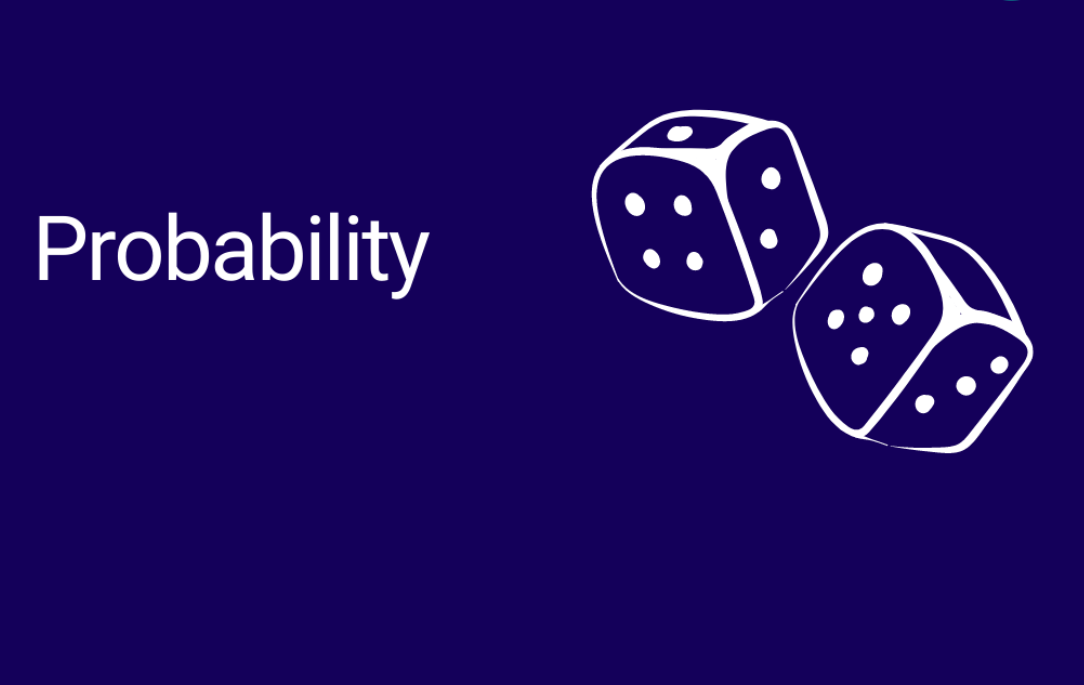Data describing
mean: $\frac1N\sum^{N}_{i=1}x_i$
p27
- scaling:
mean(kx)=kmean(x) - translating:
mean(x+c)=mean(x)+c - $\sum^N_{i=1}(x-mean(\{x\}))=0$
- sum of squared distances of data points to mean is minimized
- affect strongly by outlier
standard deviation:
$$std(\{x\})=\sqrt{\frac1N\sum^{i=N}_{i=1}(x-mean(\{x\}))^2}$$
p29
- when std is small, most data tend to close to mean
- transitional
- scalable
- there are at most $\frac1{k^2}$ data points lying $k$ or more standard deviations away from the mean.
- there must be at least one data item that is at least one standard deviation away from the mean
variance: $var(\{x\})=\frac1N(\sum^{i=N}_{i=1}(x_i-mean(\{x\}))^2)$
p31
- translating
- $var[k]=0$, where $k$ is a constant
- $var(\{kx\})=k^2var(\{x\})$
median: another use of a mean, less affect by outlier
- scalable
- translating
interquartile range:
p34
The interquartile range of a dataset $\{x\}$ is $iqr(\{x\})=percentile(\{x\},75)-percentile(\{x\},25 )$
- estimate how spread the data is, regardless the affect by outlier
- scalable
- transitional
graph
histogram:
p35
- bar chart vs histogram: bar char is for category while histogram for quantitative data
- uni/multi modal: unimodal has one peak, multimodal has many, bimodal has two
- skew: symmetric, left skew, right skew, left skew refer to its tail is long on left
box plot:
A box plot is a way to plot data that simplifies comparison
outlier: data item that are larger than $q_3+1.5(q_3-q_1)$ or smaller than $q_1-1.5(q_3-q_1)$
whisker: non-outlier data
standardized coordinate
p37
coordinate with normalized data
$$ \hat {x_i}=\frac{x_i-mean(\{x\})}{std(\{x\})} $$
- mean of standard coordinate is equal to 0
- standard deviation is equal to 1
- for many kinds of data, histograms of these standard coordinates look the same, which is the standard normal curve, given by:
$$ y(x)=\frac{1}{\sqrt{2\pi}}e^{-x^2/2} $$
- data in standard coordinate is called the normal data
correlation:
$$ corr(\{(x,y)\})=\frac{\sum_i\hat{x_i}\hat{y_i}}{N} $$
- range from -1 to 1, the larger (absolute value), the better predict
- sign represent positive/negative correlation
- 0 means no correlation,1 means $\hat {x_i}=\hat {y_i}$
- $corr(\{(x,y\})=corr(\{y,x\})$
- The value of the correlation coefficient is not changed by translating the data.
- Scaling the data can change the sign, but not the absolute value
predict:
p62
- Transform the data set into standard coordinates
- Compute the correlation $r$
- predict $\hat {y_0}=r\hat{x_0}$
- transform back into original coordinate
- Rule of Thumb: The predicted value of y goes up by $r$ standard deviations when the value of $x$ goes up by one standard deviation.
- root mean square error: $\sqrt{1-r^2}$
probability
p70
outcome: what we expect from the experiment, every run of the experiment produces exactly one of the set of possible outcomes
sample space: the set of all outcomes, which we usually write $\Omega$
event: event is a set of outcomes
- $P(\Omega)=1$
- $P(\emptyset)=0$
- denote $A_j$ as a set of disjoined event, that is $A_i\cap A_j=\emptyset$ where $i\not = j$, we have:
$$ P(\cap_iA_i)=\sum_iP(A_i) $$
combination:
p74
regardless the order, number of outcome when select $k$ from N
$$ \binom{N}{k}=\frac{N!}{k!(N-k)!} $$
probability calculating:
$$ P(A)+P(A^c)=1\\ P(A-B)=P(A)-P(A\cap B)\\ P(A\cup B) =P(A)+P(B)-P(A\cap B) $$
application:
Conditional probability
P84
the probability that $B$ occurs given that $A$ has definitely occurred. We write this as $P(B|A)$
$$ P(B|A)=\frac{P(B\cap A)}{P(A)}=\frac{P(A|B)P(B)}{P(A)} $$
$P(A)=P(A|B)P(B)+P(A|B^c)P(B^c)$
independent:
Two events A and B are independent if and only if $P(A\cap B)=P(A)P(B)$
In other form, if two events are independent, $P(A|B)=P(A)$ and $P(B|A)=P(B)$, or in simple put:
$$ P(A\cap B)=P(A)P(B) $$
- pairwise independent: each pair in events list is independent. pairwise independent cannot illustrate independent.
- conditional independent:
$$P(A_1\cap ...\cap A_n|B)=P(A_1|B)...P(A_n|B)$$
Random variables
P103
Given a sample space , a set of events $F$, a probability function $P$, and a countable set of real numbers $D$, a discrete random variable is a function with domain $\Omega $ and range $D$.
probability distribution function: $P(\{X=x\})$
cumulative distribution function: $P(\{X\leq x\})$
join probability function: $P(\{X=x\}\cap\{Y=y\})=P(x,y)$
Bayes' Rule:
$$ P(x|y)=\frac{P(y|x)P(x)}{P(y)} $$
independent random variable: $P(x,y)=p(x)p(y)$
probability density function
P107
Let $p(x)$ be a probability density function (often called a pdf or density) for a continuous random variable $X$. We interpret this function by thinking in terms of small intervals. Assume that dx is an infinitesimally small interval. Then: $p(x)dx =P$
- no negative
- $\int^{\infty}_{-\infty}p(x)dx=1$
normalizing constant: $\frac{1}{\int^{\infty}_{-\\infty}g(x)dx}$
Expected Values
P110
Given a discrete random variable $X$ which takes values in the set $D$ and which has probability distribution $P$, we define the expected value:
$$ \mathbb{E}[X]=\sum_{x\in D}xP(X=x)=\mathbb{E}_p[X] $$
for the continuous random variable $X$ which takes value in the set $D$, and which has probability distribution $P$, we define the expect value as:
$$ \mathbb{E}[X]=\int_{x\in D}xp(x)dx=\mathbb{E}_p[X] $$
Assume we have a function $f$ that maps a continuous random variable $X$ into a set of numbers $D_f$ . Then $f(X)$ is a continuous random variable, too, which we write $F$. The expected value of this random variable is:
$$ \mathbb{E}[f]=\int_{x\in D}f(x)p(x)dx=\text{the expection of }f $$
- $\mathbb{E}[0]=0$
- for any constant $k$, $\mathbb{E}[kf]=k\mathbb{E}[f]$
- $\mathbb{E}[f+g]=\mathbb{E}[f]+\mathbb{E}[g]$
- expectation are linear
- the mean/expect value of random variable $X$ is $\mathbb{E}[X]$
variance of random variable:
$$ var[X]=\mathbb{E}[(X-\mathbb{E}[X])^2]=\mathbb{E}[X^2]-(\mathbb{E}[X])^2 $$
- for constant $k$, $var[k]=0$
- $var[kX]=k^2var[X]$
- if $X,Y$ are independent, then $var[X+Y]=var[X]+var[Y]$
covariance for expected value:
$$ vos(X,Y)=\mathbb{E}[(X-\mathbb{E}[X])(Y-\mathbb{E}[Y])]=\mathbb{E}[XY]-\mathbb{E}[X]\mathbb{E}[Y] $$
- if $X,Y$ are independent, then $\mathbb{E}[XY]=\mathbb{E}[X]\mathbb{E}[Y]$
- if $X,Y$ are independent, then $cov(X,Y)=0$
- $var[X]=cov(X,X)$
standard deviation of random variable:
$$ std(\{X\})=\sqrt{var[X]} $$
Markov's inequality:
P116
the probability of a random variable taking a particular value must fall off rather fast as that value moves away from the mean
$$ P(\{|X|\geq a\})\leq \frac{\mathbb{E}[|X|]}{a} $$
Chebyshev's inequality:
- give us the weak law of large number
$$ P(\{|X-\mathbb{E}[X]|\geq k\sigma\})\leq \frac{1}{k^2} $$
indicator function:
An indicator function for an event is a function that takes the value zero for values of $x$ where the event does not occur, and one where the event occurs. For the event $E$, we write:
- $\mathbb{E}_P[\mathbb{I}_{[\varepsilon]}]=P(\varepsilon)$
Distribution
P131
discrete uniform distribution:
e.g. fair die, fair coin flip
A random variable has the discrete uniform distribution if it takes each of $k$ values with the same probability $\frac1k$, and all other values with probability zero.
Bernoulli Random Variables:
e.g. biased coin toss
Bernoulli random variable takes the value $1$ with probability $p$ and $0$ with probability $1-p$. This is a model for a coin toss, among other things
- $mean =p$
- $variance = p(1-p)$
The Geometric Distribution:
e.g. we flip this coin until the first head appears, the number of flip required to get one head
$$ P(\{X=n\})=(1-p)^{n-1}p $$
- $mean=\frac1p$
- $variance=\frac{1-p}{p^2}$
The Binomial Probability Distribution:
e.g. toss a coin, the probability that it comes up head $h$ times in $N$ flips
$$ P_b(h;N,p)=\binom{N}{h}p_h(1-p)^{N-h} $$
- as long as $0\leq h\leq N$, in other case, the probability is equal to 0
- $mean=Np$
- $variance = Np(1-p)$
Multinomial Probabilities:
e.g. toss a die with k sides, the probability that it comes up a outcome in $N$ flips
The Poisson distribution:
e.g. the marketing phone calls you receive during the day time
$$ P(\{X=k\})=\frac{\lambda^ke^{-\lambda}}{k!} $$
where $\lambda > 0$ is a parameter often known as the intensity of the distribution
- $mean=\lambda$
- $variance=\lambda$







nice note,压力马斯内